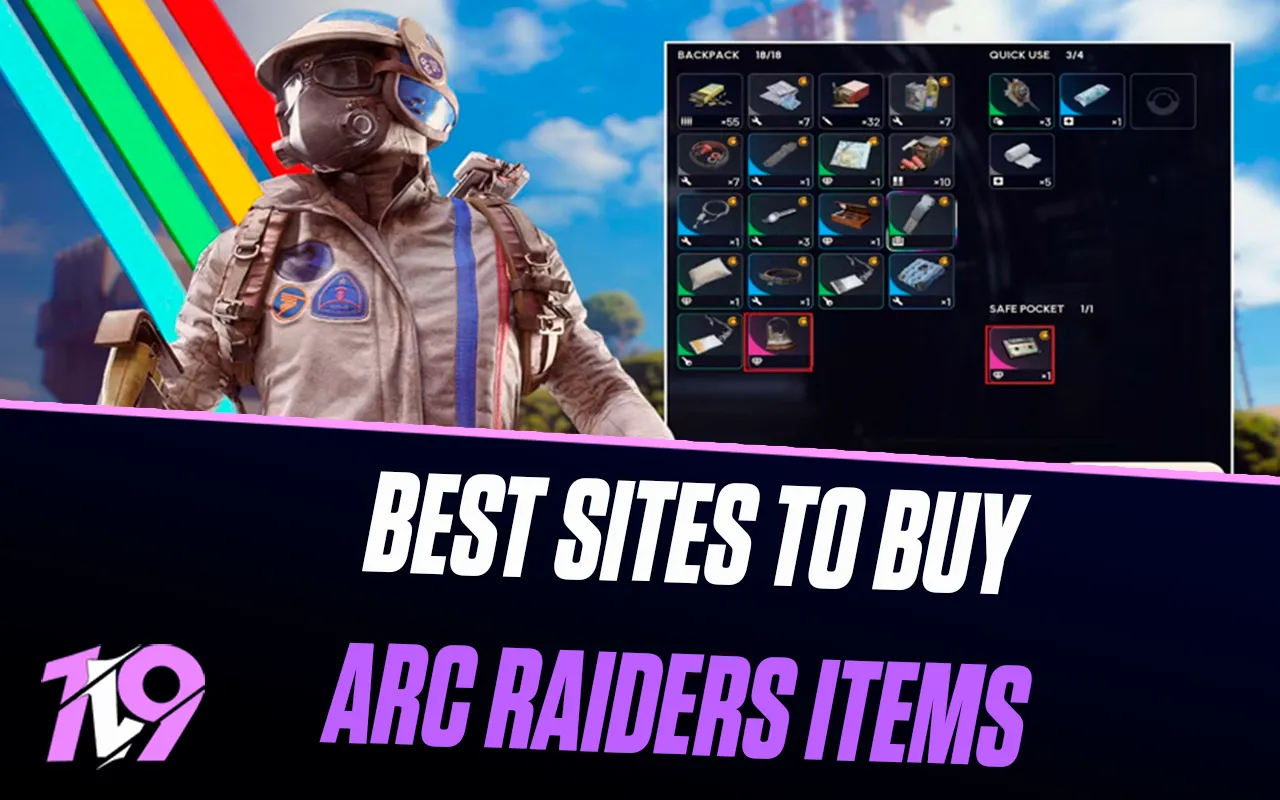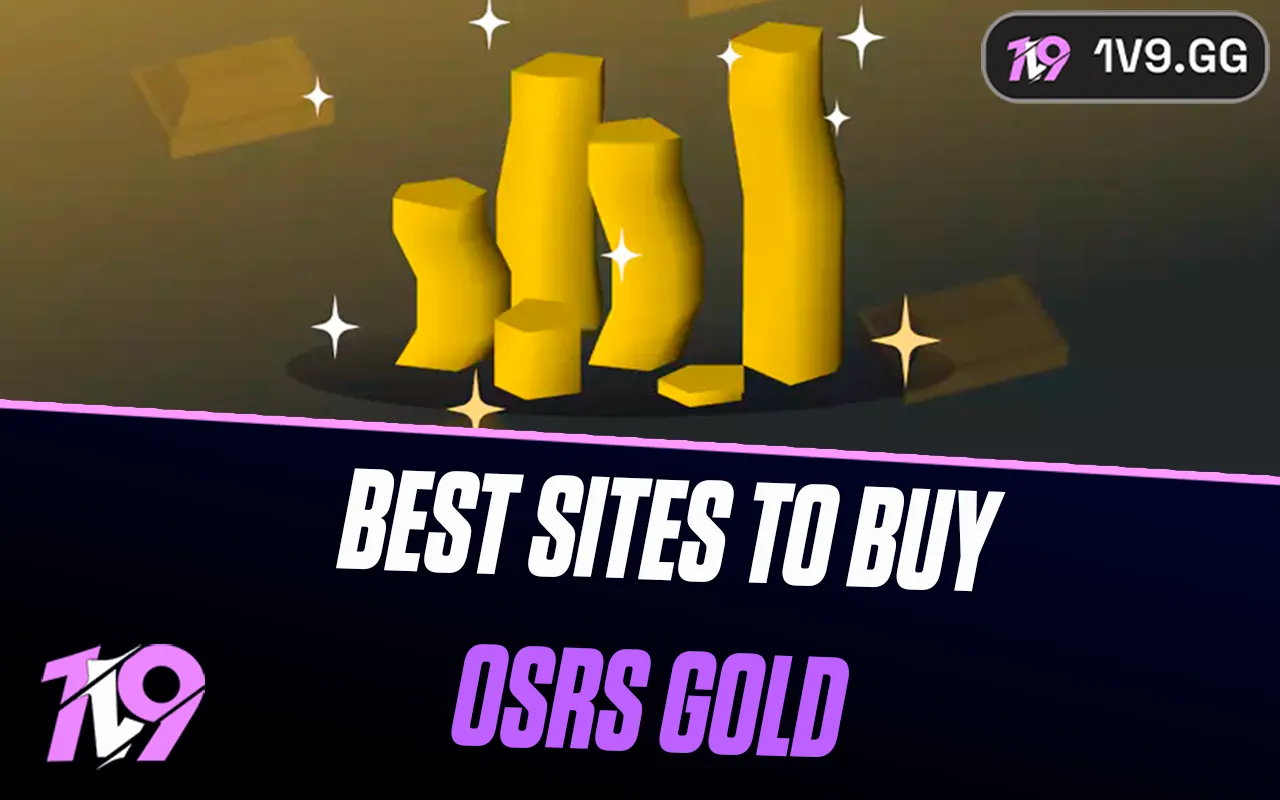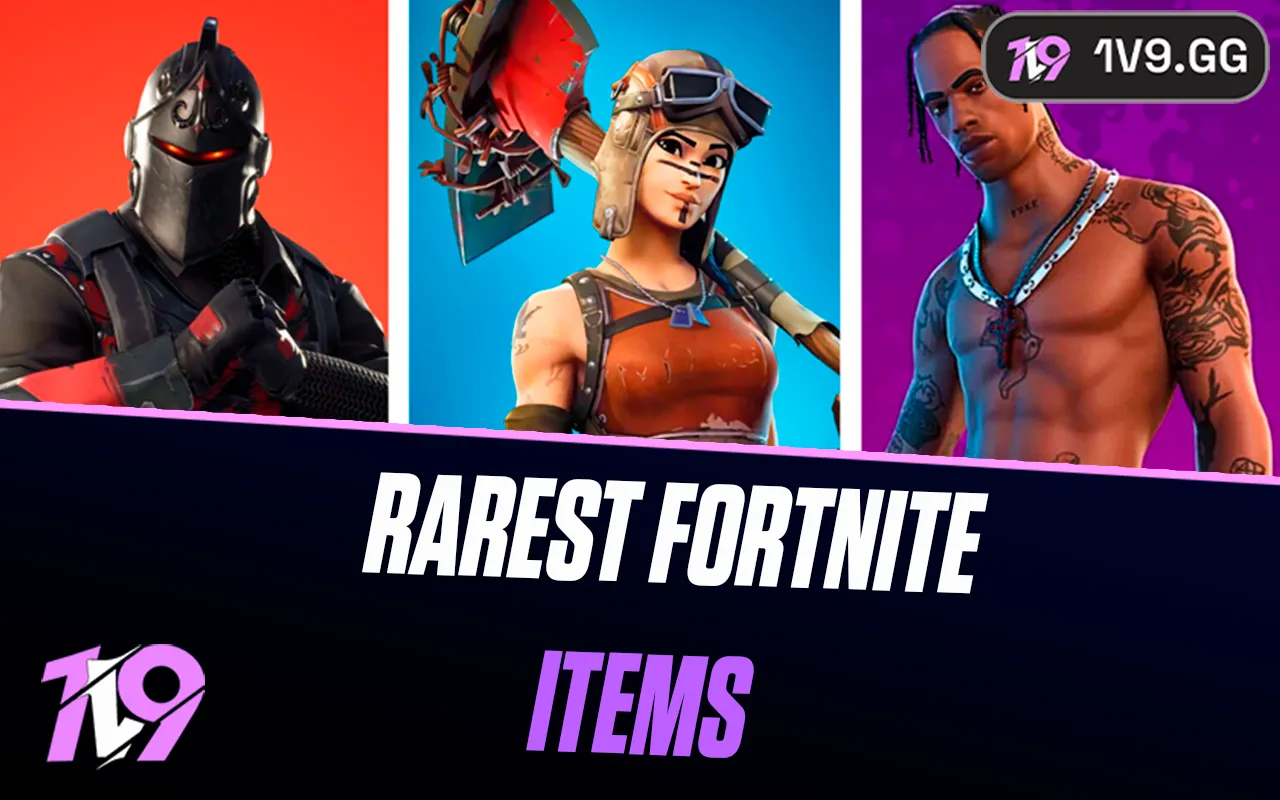
Wild Rift Ranking System Explained - All Ranks in 2024
League of Legends: Wild Rift offers more than just casual gameplay; for many, it’s a competitive arena to measure their skills against others. Riot Games continually updates the ranking system to ensure a fair and compelling competitive experience. Before jumping into the fray, it’s essential to grasp the intricacies of the ranking system.
This guide will break down the various ranks available, explain how to advance through them, and outline the rules that guide this progression. While starting a game might be straightforward, climbing to the elite rank of Challenger requires a deeper understanding and strategy. Equip yourself with this thorough overview of the Wild Rift ranking system, and prepare to ascend the competitive ladder.
Tiers and Divisions in Wild Rift

Wild Rift offers an expansive ranking system composed of eleven distinct tiers, each presenting its own challenges and milestones. In Season 3, the developers adjusted the entry requirements for ranked play, now requiring players to reach level 10 and possess at least 16 Legends, ensuring participants are adequately prepared for competitive play.
The tiers range from the introductory Iron to the prestigious Sovereign, the newest addition above Challenger, representing the pinnacle of Wild Rift competition. Here’s a brief overview of the tiers:
1. Iron
2. Bronze
3. Silver
4. Gold
5. Platinum
6. Emerald
7. Diamond
8. Master
9. Grandmaster
10. Challenger
11. Sovereign
Unlike some games, Wild Rift doesn’t require placement matches to start your ranked journey; you begin climbing the ranks from your very first competitive match. As you ascend from one tier to the next, the competition becomes increasingly skilled, demanding not only mastery over your champions but also strategic adaptability and keen game sense.
Achieving a high rank in Wild Rift is a commendable feat, reflecting significant dedication and skill in the game’s competitive landscape.
The Sovereign Rank and Changes in High Elo

Wild Rift has introduced a prestigious new rank called Sovereign, positioned above Challenger, which is designed for the very best players in the game. This update, along with other refinements to the high-elo ranking system, aims to enhance the competitive landscape and offer greater rewards for the most skilled and dedicated players.
Additionally, the requirements to advance from Master to Grandmaster have been lowered, facilitating a smoother progression into higher ranks. Nevertheless, the true challenge begins when striving for Challenger and beyond.
In the Sovereign tier, there’s no maximum limit to the points players can accumulate, allowing top-tier players to continually challenge themselves and vie for supremacy on the leaderboard.
Marks
In Wild Rift, your journey through each division is tracked using a system called Marks. Winning matches earns you Marks, and losing matches costs you Marks, with the exception of the Iron and Bronze tiers where you don’t lose any.
Here’s a breakdown of how many Marks you need to progress through each tier:
• Iron: 2 Marks per division
• Bronze: 3 Marks per division
• Silver: 3 Marks per division
• Gold: 4 Marks per division
• Platinum: 4 Marks per division
• Emerald: 5 Marks per division
• Diamond: 6 Marks per division
• Master: 1 Mark minimum
• Grandmaster: 30 Marks minimum
• Challenger: 60 Marks minimum
• Sovereign: 100 Marks minimum
Each rank from Iron to Diamond is split into four divisions, marked IV to I. For instance, after advancing from Iron I, you move up to Bronze IV. The challenge intensifies as you climb, with higher tiers like Diamond requiring a greater number of games to progress compared to earlier ranks like Bronze.
The highest tiers—Master, Grandmaster, Challenger, and Sovereign—do not have subdivisions. Instead, you need a substantially larger amount of Marks to progress from one to the next. This setup ensures a challenging ascent, with the most competitive players aiming for the top spots in the upper echelons from Master to Sovereign.
Even once you reach the pinnacle at Sovereign, you can continue to earn Marks. These are crucial as only the highest-ranking players make it onto the regional leaderboards, which reset daily.
Leaderboard caps for each region are as follows:
• China: 5,000 players
• Asia: 400 players
• Americas: 300 players
• Europe: 300 players
In this system, Victory Points are no longer used and have been replaced entirely by Marks, streamlining the progress and competition in the ranking system.
Ranked Fortitude and Loss Shields

Ranked Fortitude is a reward system in Wild Rift that recognizes and rewards consistent, high-quality play from Iron to Sovereign tiers. It’s represented by a bar under your rank icon and increases when you win games, play exceptionally, or persevere in matches despite having an AFK teammate. However, quitting a game or engaging in negative behaviors can decrease your Fortitude points.
Here’s how Fortitude caps are structured across the different ranks:
• Iron: 250
• Bronze: 300
• Silver: 350
• Gold: 400
• Platinum: 450
• Emerald: 500
• Diamond: 550
• Master to Sovereign: 600
Fortitude is persistent; it carries over even when you move between tiers. Once you reach the maximum Fortitude for your tier, it’s automatically used to activate a Loss Shield. This shield prevents the loss of a rank mark following a defeat.
Fortitude can also be reduced if you’re penalized for leaving a match or if you’re marked as AFK during a game. However, you can accumulate Fortitude through several activities: completing autofill missions, playing your first match of the day, receiving compensation for playing with disruptive teammates, outstanding individual performance, commendable efforts in defeat, consistent match contributions, maintaining win streaks, and engaging actively in matches.
Note that Fortitude has a weekly limit of 1200, which resets every Monday at 00:01 UTC. The system prioritizes Fortitude adjustments before applying changes to your rank marks, adding strategic depth to how you approach ranked play and maintain your position in the league.
Fortitude Gain
• Autofill Mission: 40 points
• Daily First Match: 45 to 75 points
• Compensation for Griefing Teammate: Up to 50% of the maximum Fortitude available, adjusted based on the severity and duration of the teammate’s misconduct. This compensation kicks in if a teammate’s negative behavior such as AFK or intentional feeding is detected during the match.
• Extraordinary Performance: 6 to 31 points, awarded for surpassing expected performance metrics significantly.
• Fortitude Card: 100 points
• Honorable Defeat (SVP Award): 200 points, granted for maintaining superior performance in a losing effort.
• Match Performance: 2 to 15 points, based on how well you perform relative to the rest of the players in the match.
• Win Streak: Points equivalent to (Wins - 1) * 6, with a cap at 6 consecutive wins.
• Proactive Participation: 5 to 10 points, deducted if flagged for being AFK.
• A Rating in a Match: 30 points
• S Rating in a Match: 50 points
These varied sources of Fortitude not only reward consistent play but also encourage resilience and exceptional performances in matches. Each point type has been designed to foster a constructive and engaged competitive environment.
Recent Adjustments to Rank Fortitude
Recent Updates to the Rank Fortitude System
Wild Rift has recently fine-tuned the Rank Fortitude system to better balance the competitive landscape. Rank Fortitude acts as a buffer against loss streaks, ensuring that players can progress steadily without being overly penalized for occasional defeats.
For players below the Master tier, the accrual rate of Rank Fortitude has been increased. This enhancement is designed to boost morale by making the safety net more accessible, helping players in lower tiers recover from losses more efficiently and feel a greater sense of achievement.
Conversely, adjustments have been made to reduce the Fortitude points awarded in certain matches to prevent overly rapid ascension through the ranks without consistent performance. This calibration is aimed at maintaining the integrity of the competitive scene, ensuring that advancement through the ranks is a true reflection of skill and persistence, rather than reliance on the Fortitude system alone.
Removal of Promotion Series

Wild Rift has eliminated the promotion series, simplifying the process of advancing to the next tier. Now, players ascend by winning just one game after accumulating 100 marks in their current division. This streamlined approach removes the traditional best-of series, allowing for quicker progression.
However, this also introduces a greater risk; a single loss at 0 marks results in an immediate demotion. This change in the ranked system emphasizes the importance of consistent performance, as players can both climb and fall through the ranks more swiftly. This new system encourages continuous effort and strategic play to maintain and advance one’s standing in the rankings.
Premade Parties Restrictions
Restrictions for Premade Parties in Ranked Matches
In Wild Rift, you can form ranked game parties of one, two, three, or five players. Unfortunately, four-player parties are not supported in ranked queues and must opt for normal games.
Rank Compatibility for Queueing:
The game imposes rank restrictions to ensure balanced matchmaking in solo, duo, and trio queues:
• Iron to Silver: Can queue with players from Iron up to Silver.
• Gold: Eligible to play with Silver through Platinum ranks.
• Platinum: Can match with players from Gold to Emerald.
• Emerald: Partners can range from Platinum to Diamond.
• Diamond IV & III: Restricted to playing with those from Emerald through Diamond.
• Diamond II & I: Can queue with players from Emerald up to Master.
• Master: Matches can include players from Diamond I to Grandmaster.
• Grandmaster: Limited to Master through Grandmaster.
• Challenger: Exclusive to Challenger rank players.
• Sovereign: Challenger and Sovereign players can queue together.
These restrictions are designed to promote fair play and competitive integrity, making sure that matches are as balanced as possible according to players’ skill levels.
MMR (Matchmaking Rating) in LoL Wild Rift
Matchmaking Rating (MMR) Dynamics in Wild Rift
In Wild Rift, your visible rank is only part of your competitive profile. Beneath the surface operates the Matchmaking Rating (MMR), a concealed metric that plays a crucial role in determining your game opponents. MMR is essentially a measure of your skill, adjusting dynamically based on the outcome of each match you play.
The influence of MMR extends to the marks you gain or lose post-match. For instance, achieving a victory against players with a higher MMR can yield a significant increase in marks, while losing to those deemed less skilled might result in a larger deduction. Moreover, maintaining win streaks can elevate your MMR, enhancing your progression potential, whereas a series of losses can decrease it, impacting your climb through the ranks.
It’s also worth mentioning that actions like dodging games or leaving during champion select can adversely affect your MMR. While occasionally dodging to avoid a poor team setup might seem strategic, frequent dodges can backfire, stalling your rank advancement and extending your wait times for matches.
Comparing Wild Rift and League of Legends (PC) Ranking Systems
Wild Rift and League of Legends (PC) both provide competitive ranking systems, though they diverge in certain aspects that tailor each to its platform. In terms of progression, Wild Rift players advance by earning or losing Marks through match outcomes, while League of Legends players manage League Points (LP) with each win or loss.
Seasonal structures also differ: Wild Rift offers shorter seasons, which means more frequent resets and chances for players to climb ranks, contrasting with the longer, more drawn-out seasons in League of Legends. This can affect how rewards are distributed, with each game tailoring its incentives to match its competitive calendar and player engagement strategies.
Despite these variations, the fundamental strategies for advancing in ranks—such as focusing on personal skill development, staying updated with the current meta, and emphasizing teamwork—remain consistent across both games. This unified approach ensures that players of either game can transition and adapt if they choose to switch platforms.
Legendary Queue Explained

Legendary Queue (LQ) offers a premium, solo competitive challenge in Wild Rift, tailored specifically for top-tier players. This distinct queue operates on a separate MMR system from the standard Ranked play and includes a public leaderboard showcasing the top 100 players from each region.
Qualifying for Legendary Queue
To enter the Legendary Queue, players must achieve a Master rank in the current season and possess a Champion Mastery score of at least 1000. Once qualified, access to LQ is maintained as long as a player’s rank stays at Diamond or higher. Falling below Diamond necessitates a climb back up to Master to regain LQ access.
Operational Hours
Legendary Queue is open during specified hours each day to maximize player availability and uphold leaderboard integrity. Generally, LQ is accessible from 12:00 PM to 11:59 PM daily, although exact times may vary by region.
Structure and Progression
Legendary Queue is structured into several tiers and divisions:
• Warrior (IV–I)
• Commander (IV–I)
• Guardian (IV–I)
• Vanquisher (IV–I)
• Immortal (IV–I)
• Legend
Players start at Commander IV with 800 Legendary Points (LP), and each division climb requires accumulating 200 LP. To avoid LP decay, active participation in LQ is necessary. Players inactive for a week will lose 40 LP weekly until they either compete in LQ again or drop to 800 LP.
Exclusive Seasonal Rewards
Players competing in LQ can earn unique seasonal rewards, including icons, banners, emotes, and special ability augments for the season’s Ranked skin, all of which are viewable in the Ranked Rewards section of the Riot Games client. These exclusive incentives are designed to commend the achievements and dedication of LQ participants.
The Average Rank of Wild Rift Players

Statistical insights into the distribution of ranks among Wild Rift players reveal that the average rank tends to oscillate between Silver and Gold. Despite this, there’s a significant concentration of active players in the Platinum and Emerald ranks, as indicated by the notably quicker queue times experienced at these levels. This suggests a robust engagement from players striving beyond the average, aiming for higher tiers in the competitive landscape of Wild Rift.
The Role of Wild Rift Coaching in Climbing Ranks
Seeking professional coaching from 1v9 for Wild Rift can significantly enhance your gameplay. Coaches bring a professional, external viewpoint that can be pivotal in transforming your playstyle. They can help refine your strengths, address your weaknesses, and provide strategic insights that are crucial for advancement. From fine-tuning your champion pool and mastering macro strategies to perfecting the art of last-hitting, the targeted assistance from a seasoned coach can equip you with the necessary skills to ascend through the ranks in Wild Rift efficiently.
Tips for Climbing up the Wild Rift Ladder
To successfully climb the Wild Rift ladder, a combination of individual prowess, team collaboration, and tactical acumen is essential. Mastery of your champions and staying abreast of the current meta are foundational. Deep knowledge of various champions allows you to leverage their strengths, mitigate their weaknesses, and understand team synergies, giving you a tactical edge in ranked games.
Enhanced map awareness and a strategic focus on objectives are critical. By keeping tabs on enemy movements and securing key objectives like turrets, dragons, and Baron Nashor, you can significantly sway the game in your favor.
Effective communication is vital in this team-centric game, as well-coordinated teams are more likely to execute successful strategies and outmaneuver opponents.
Lastly, maintaining a positive mindset and viewing each loss as a learning opportunity is crucial for continuous improvement. Setbacks should be seen as stepping stones for growth, not reasons for frustration. Stay motivated, analyze your gameplay, and refine your strategies to persistently progress through the ranks.
Wild Rift's Ranking System Rewards
Ascending the ranks in Wild Rift isn’t just about prestige; it also comes with an array of enticing rewards, making every step of your competitive journey worthwhile. Players who engage in Ranked games can look forward to an assortment of incentives, with the richness and variety of the rewards increasing as they advance higher up the ladder.
Rewards are typically granted at the season’s conclusion, serving as a grand payoff for your dedication and skill. However, Wild Rift also sprinkles additional rewards throughout the season when players reach specific milestones, so make sure to check your in-game notifications regularly.
From exclusive champion skins and unique emotes to other special in-game items, these Ranked rewards are tailored to celebrate your progress and enhance your gaming experience, making every match and every victory that much more rewarding.
Conclusion
Understanding the Wild Rift ranking system is crucial for anyone looking to take their gameplay to a competitive level. From the basic tiers to the prestigious Sovereign rank, each level offers its own challenges and rewards. With this guide, you now have a clearer understanding of how the ranking system works, what it takes to progress, and the rewards you can earn for your efforts. Whether you’re a seasoned player aiming for the top or a newcomer starting your journey, the path to mastering Wild Rift’s ranks is now demystified, paving the way for a strategic and rewarding climb up the competitive ladder.
Posted On: August 28th, 2024
Recent Articles
💬 Need help?
Our 1v9 support team is available 24/7 to help you with any questions or issues you may have.
support@1v9.gg
Loading...
1v9.gg is not endorsed or affiliated by any game developers or publishers.
2025 1v9, All Rights Reserved, Created By NightDev







